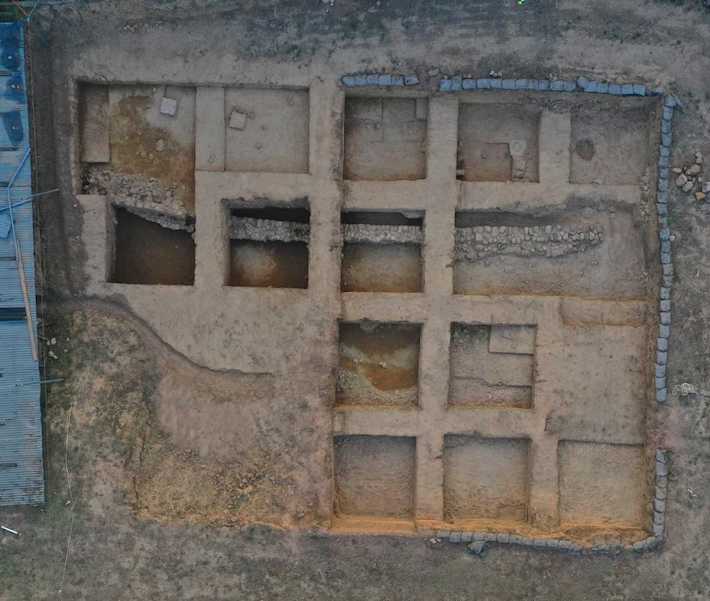 ATHENS, GREECE—According to a report in ARTnews excavations at the site of the ancient Greek city of Helike, located along the Gulf of Corinth’s southwest coast, have unearthed the remnants of two buildings and religious objects that may have functioned as part of a sanctuary dedicated to Poseidon, god of seas and storms. Erected in an area that flooded frequently and was continually reconstructed, the ancient city succumbed to an earthquake and tsunami that buried it some 2,600 years ago. Of the pair of structures discovered, the first structure (dated to the eighth century B.C.) rose to 65 feet and included pressed soil floors, while the second (dated to between the seventh and sixth century B.C.) sat upon a stone temple-shaped foundation. The additional religious artifacts found—bronze and clay items such as figurines, clay chariot wheels, iron weapons, pottery dating to the Archaic period, a bronze snake head, and rare golden necklace—confirm that the space was used for religious purposes beginning around 850 B.C. The archaeologists also discovered evidence of animal sacrifice and grape plants. Previous excavations at the site uncovered an arched temple, dating to between 710 and 700 B.C., and a brick altar, dating to between 760 and 750 B.C. For more on Greek sanctuaries dedicated to Poseidon, go to “The Sea God’s Sanctuary.”
ATHENS, GREECE—According to a report in ARTnews excavations at the site of the ancient Greek city of Helike, located along the Gulf of Corinth’s southwest coast, have unearthed the remnants of two buildings and religious objects that may have functioned as part of a sanctuary dedicated to Poseidon, god of seas and storms. Erected in an area that flooded frequently and was continually reconstructed, the ancient city succumbed to an earthquake and tsunami that buried it some 2,600 years ago. Of the pair of structures discovered, the first structure (dated to the eighth century B.C.) rose to 65 feet and included pressed soil floors, while the second (dated to between the seventh and sixth century B.C.) sat upon a stone temple-shaped foundation. The additional religious artifacts found—bronze and clay items such as figurines, clay chariot wheels, iron weapons, pottery dating to the Archaic period, a bronze snake head, and rare golden necklace—confirm that the space was used for religious purposes beginning around 850 B.C. The archaeologists also discovered evidence of animal sacrifice and grape plants. Previous excavations at the site uncovered an arched temple, dating to between 710 and 700 B.C., and a brick altar, dating to between 760 and 750 B.C. For more on Greek sanctuaries dedicated to Poseidon, go to “The Sea God’s Sanctuary.”
Excavation Uncovers Potential Greek Cult Center of Poseidon
